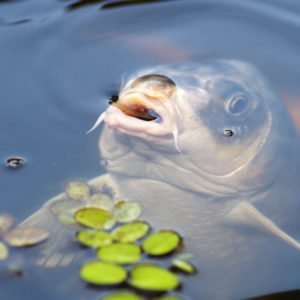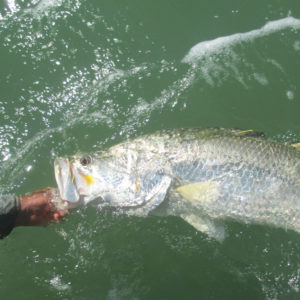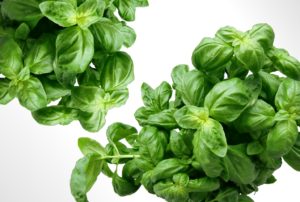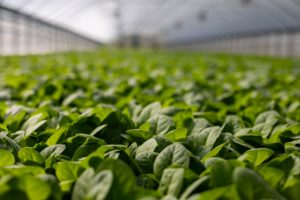Easiest Fish for Aquaponics
If you’re interested in starting your own aquaponics system, you’re in the right place. Of course, just as important as setting up your system is deciding which fish you want to grow. While some of the most popular species might sound appealing, keep in mind that some fish are easier than others. Remember, in aquaponics, you have to take care of both fish and plants.
Where should you start?
In this article we’ll go over some of the easiest fish for aquaponics.
How to Find Easy Fish to Raise
Whether you take our advice on the best types of fish or not, there are some ways you can figure out if fish are easy or difficult to raise for yourself. What you have to do is look at some key factors including:
- Temperament
- Ideal conditions (pH, temperature, DO levels, etc.)
- Hardiness
- Time to grow to plate size
- Diet
Temperament
Who cares about a fish’s temperament if you don’t plan on keeping them as a pet, right? Well, actually it makes a difference in aquaponics too. The thing is, if you have aggressive fish, they can be more difficult to manage. More aggressive fish species often can’t be stocked with other, more passive fish. Ultimately the carnivorous, aggressive fish might end up eating your other stock.
Aggressive species tend to need more space, and consideration. These fish should only be kept with the same species, and with other fish of similar size (they will also eat smaller fish of the same species).
If you want easier fish, look for more passive, gentle species that don’t need as much oversight. Sometimes you can even raise these fish with other species without an issue.
Ideal conditions
Both fish and plants need certain conditions to grow. Because aquaponics incorporates both, you need a combination that can tolerate the same range of conditions. Just like plants, some fish are more likely to tolerate a wide range of conditions, while others are much more sensitive.
Because their environment includes a variety of factors you need to monitor, look for species that can live in a broad range of conditions.
For example, Murray Cod can stand temperatures anywhere from 46-75℉. However, they can only tolerate pH levels between 6 to 7. On the other hand Tilapia needs temperatures from 82-86℉. However, they can tolerate a much wider range of pH levels, from 6.5 to 9.
Not only do you need to find a species with a wide range of tolerance, you also have to make sure to choose plants with the same needs.
Hardiness
Some fish are a lot tougher than others, and a rapid change in their environment won’t kill them. We recommend these hardier fish for beginners because they’re more likely to survive if you make a mistake. Generally, the wider range of conditions they tolerate, the hardier they are.
A good example is catfish, although there are several different types, so you’ll have to choose the right one. In terms of temperature, most catfish prefer temperatures between 75℉ to 86℉. Should temperatures fall outside of this range, most catfish can survive the change for some period of time.
Time to plate size
Plate size, when it comes to raising fish, typically means the size at which fish are ready to eat. Of course, this can also depend on the species, as fish will grow to different sizes at maturity. Largemouth bass can typically be harvested at or after one year. By this time, they can weigh up to 2 lbs. Tilapia grow much faster, and can sometimes be harvested as early as 6 to 8 months. By harvest time, they typically weigh about one pound.
When it comes down to it, this factor can really come down to personal preference. How long are you willing to wait to harvest your fish? Another thing to consider is the time it takes them to grow to maturity, versus the time it takes them to breed (if you plan on breeding your fish). Some fish reproduce very quickly, and can spawn a new brood every 4 to 6 weeks. If you have limited space, and plan to breed fish, you also need fish that can be harvested more quickly too.
Diet
Omnivores eat a combination of meat and plants, which can make them easier to feed. Herbivores eat only plants, and carnivores eat only meat. Fish that will eat a greater variety of food can be easier to feed well, as a result, may grow to harvest size faster. However, dietary needs should only be part of your decision. No matter what, you still have to feed your fish, you just need to make sure you have a viable way to do so before you decide to put them in your system.
Another thing to think about: carnivorous fish also tend to be more aggressive and territorial. If you choose a carnivorous fish, be mindful of the tank (and any other fish) you choose.
What Are the Easiest Fish for Aquaponics?
Now that you know what can make a fish harder or easier to care for, let’s get into our list! Keep in mind that this list is just our recommendations- there are plenty of other great fish you can choose to grow in your aquaponic system.
Trout
Trout are popular for eating, but they’re also a very hardy fish. Right off the bat, this makes them much easier to manage. In fact, one of the biggest advantages of growing trout is how easy it is to maintain the temperature of their tank. Trout like colder water, between 45℉ to 65℉. You might not even need to use a heater.
Trout can also tolerate a fairly wide pH range, from 6.5 to 8. Depending on the type of trout you choose, they can grow very slowly or very quickly. Some trout can take up to 4 years to reach plate size, while others can take just over a year.
One thing to know about trout is that they can attack other fish, and they’re omnivores that need a varied, high protein diet.
Tilapia
Tilapia are an all time favorite for aquaponics. Whether you grow commercially or in a small scale home system, they’re a great choice. Tilapia are known to be hardy fish, and while they prefer a somewhat smaller range of temperatures, they can tolerate a pretty wide range of pH levels. However, a swing in temperature isn’t likely to kill them, and most can survive temperatures as low as 60℉.
Another reason tilapia are known to be so hardy is that they can also tolerate fairly low dissolved oxygen levels (as low as 0.2 ppm) and high levels of ammonia and nitrates. Their hardiness makes them an ideal choice for aquaponics for beginners, as it can take some time to learn to keep a stable tank environment. You will need to correct your mistakes, but it’s unlikely a few mistakes will kill your fish.
Tilapia are omnivores, and tend to take to a wide variety of different foods. Unlike some other omnivore species, tilapia can also be stocked with some other fish species, such as catfish. While they do generally have a mild temperament, the males can become more aggressive during breeding times, and may attempt to eat the young fish. To prevent this, you’ll need to separate juveniles or keep them in a different tank.
These fish are known to both grow and breed quickly. They can grow to maturity in as little as 6 to 8 months, and can breed every 4 to 6 weeks. For some people, that’s a bonus. However, it also means to need to be wary of your tank becoming overstocked as the fish continue reproducing.
Catfish
Catfish are gentle tank companions, and can often be kept with other species. In fact, many people choose to keep at least a couple catfish in their tanks. The reason for this is that catfish are bottom feeders. They’ll eat any sinking food that top feeders don’t, which means there’s less decomposing matter in your tank. As a result, your water quality remains more stable, and your tank is cleaner in general.
Catfish are another species that grows fairly quickly, and most are ready for harvest in 18 months or less. These fish also tolerate temperatures and pH levels that are acceptable for a lot of other fish and plants (75-86℉, and pH from 7 to 8.5). However, they can tolerate colder temperatures- it just means they aren’t likely to grow as well and won’t eat as much either. Most catfish will grow to at least a pound at maturity, although some, like the channel catfish, can grow as large as 40 to 50 pounds!
If you’re worried about managing space in your aquaponics system, catfish don’t need as vertical space as they do horizontal space. Not only that, but some types of catfish are much less likely to breed on their own when kept in a tank.
Perch
There are a few main varieties of perch that are common to aquaponics: Jade, Silver, and Yellow. Like other fish, each of these grows at somewhat different rates and have various needs. However, they typically prefer temperatures between 70℉ to 82℉, and a pH between 6.8 and 7.8. Most varieties of perch are considered good fish for beginners in aquaponics because they can handle many changes in their environment, and cooler temperatures. Like many other types of fish though, cooler temperatures can slow their growth and reduce the amount they eat.
Perch are omnivorous, although they’re happy to eat a varied diet, as long as they get moderate levels of protein. It’s suggested to feed them small bugs or shrimp as well as some plant based foods. They’re also good tank mates for other types of fish with similar sizes and temperaments.
One of the deciding factors for many people when choosing what type of perch to grow is the time it takes them to reach maturity. Silver perch can take as long as 16 months to reach plate size, while jade perch typically takes between 10 to 12 months. However, many people also choose yellow perch because they can tolerate wider temperature and pH ranges, and can reach over two pounds.
What other fish can you grow in aquaponics?
Once you get the basics down, you have a lot more options for what you want to grow. In this list, we’ve merely suggested some of the best fish when you’re starting aquaponics. For an overview on the different types of fish you can grow, see this guide. When you’re ready to move up to more demanding options, read our guide on fish for intermediate skill levels.



